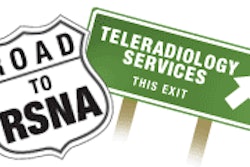Everything is digital these days: x-rays, ultrasound, even your grandmother's recipes. Managing the electronic information flow associated with Italian wedding soup may not require specialty knowledge, but moving billions of bytes of imaging data from radiologists to physicians and patients and back again requires a certain kind of intellectual fortitude.
That's why hiring a PACS administrator can be such tricky business. The term "PACS administrator" previously applied to someone with any radiology, medical, technical, or informational skills. But the Society for Imaging Informatics in Medicine (SIIM) in Leesburg, VA, wants to quantify those skills by establishing a new set of certification criteria.
SIMM recently announced sponsorship of the Certified Imaging Informatics Professionals (CIIP) program, a new certification initiative to professionalize the PACS administrator position.
The PACS Administrators Registry and Certification Association (PARCA) in Denton, TX, established a certification program in early 2005, and other radiology organizations have offered their own fee-based certifications.
But SIIM hopes to standardize its program through the National Commission for Certifying Agencies, the accreditation body of the Washington, DC-based National Organization for Competency Assurance, according to Anthony Seibert, Ph.D., professor of radiology at University of California, Davis, and chair of the SIIM certification committee.
"We want to separate ourselves from other certification processes," he said.
Charles Socia, vice president of operations for Synergy Imaging in Little Rock, AR, and a member of the committee said that "PARCA and some other organizations are set up like schools -- you pay to take their exam -- whereas our certification exam more resembles a medical professional exam, such as that for respiratory therapists."
SIIM hopes that certification creates an accurate measure of the knowledge and skills of imaging informatics professionals, offering a means for employers to better evaluate qualifications for PACS-related positions.
The committee put draft test content online, and is soliciting input from PACS administrators on eligibility requirements and the weighting of the test's various elements, Seibert said.
He projects that the first test will be available in September 2007, and exams initially will take place twice a year at multiple locations in the U.S.
The increasingly technical nature of PACS and the complex range of its functions have produced PACS administrators with widely divergent aptitudes, backgrounds, and experiences. The SIIM certification process reflects the changing nature of PACS managers, Seibert said.
The program will incorporate interpersonal, business, and technical elements, he said.
"We want to make sure that there's a minimal competence in all three areas," Seibert explained. "If a facility hires a PACS administrator without looking at (his or her) credentials, it could have a problem. After all, you don't hire a radiologist unless (he or she is) board-certified."
The committee wants to create a universal certification standard without unfairly disqualifying anyone from taking the exam, Socia noted.
"We want to make sure that everybody who should take the test will be able to do so," he said.
Eligibility requirements for the exam will require two years of experience, plus continuing education and a certain level of performance, according to Siebert.
However, "if somebody has a (radiologic technologist) background, (he or she) won't have to have an equally strong IT background to take the test, but will have to have basic knowledge about how the PACS system functions," he said.
The exam and resultant certification are voluntary, Socia said. Nonetheless, he fully expects that a large number of experienced PACS administrators will participate.
Outcry from experienced PACS administrators over the hiring of less experienced workers became a driving reason for the program, he said.
"There was also confusion over their job description," he said. "The catalyst for our job-task analysis was our desire to know what PACS administrators really do. After taking our exam, we (believe that) they'll be able to be competent across the board. The ideal candidate should be able to step into a medium-size hospital and develop a full PACS program from scratch."
Facilities hiring PACS administrators before the SIIM exam rollout should visit the CIIP Web site and look at the framework developed by the certification committee, Seibert recommended.
SIIM plans to periodically place sample exam questions on its CIIP Web site before the test's September 2007 debut, which will give prospective employers an idea of whether their PACS administrators are eligible.
"Our hope will be that a full bachelor's- and/or master's-level degree program will come of our certification program," Socia said.
By Melissa Varnavas
AuntMinnie.com contributing writer
November 15, 2006
This article originally appeared in the Radiology Administrator's Compliance & Reimbursement Insider, a monthly newsletter published by HC Pro that is designed specifically for radiology administrators. For a free trial subscription, please click here.
Related Reading
Increase image reimbursement with a designated coder, August 7, 2006
Prevent IR coding whirlwind with basics, July 26, 2006
PACS administrator certification efforts heat up, June 20, 2006
The added value of ACR accreditation, June 13, 2006
Unlock success with strategy, research, April 27, 2006
Preparing for a JCAHO visit, April 18, 2006
Copyright © 2006 HC Pro



















